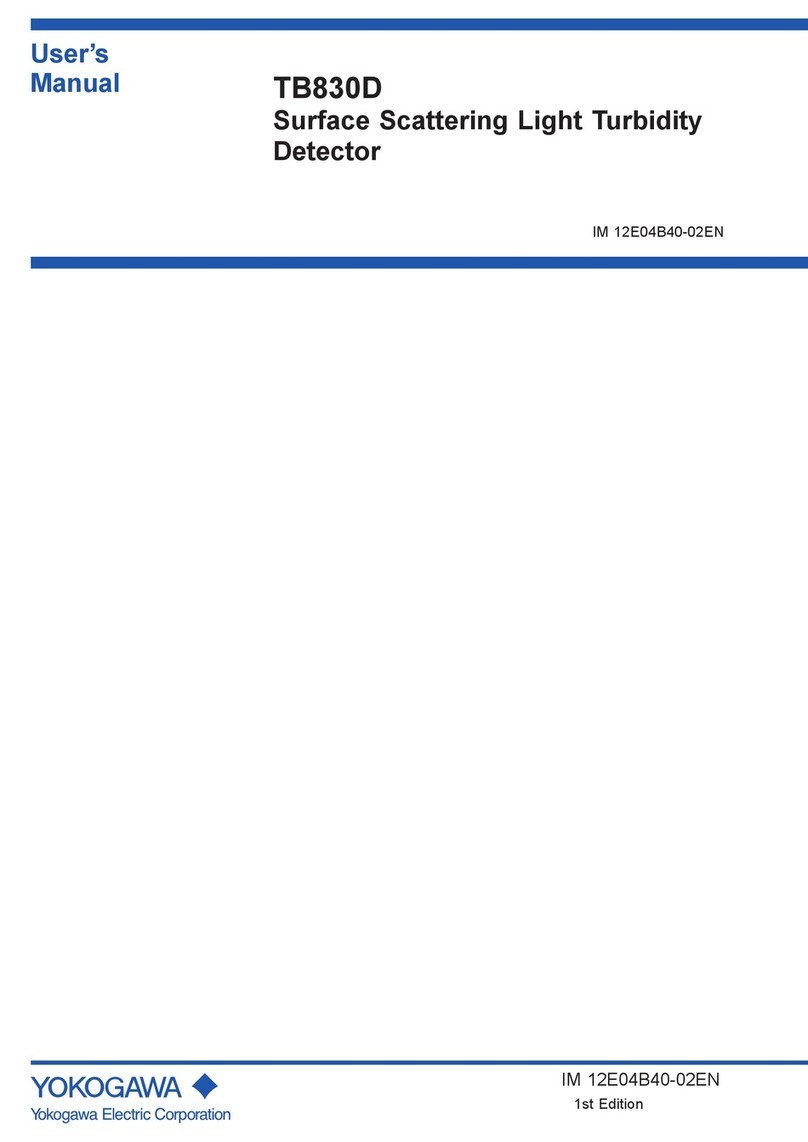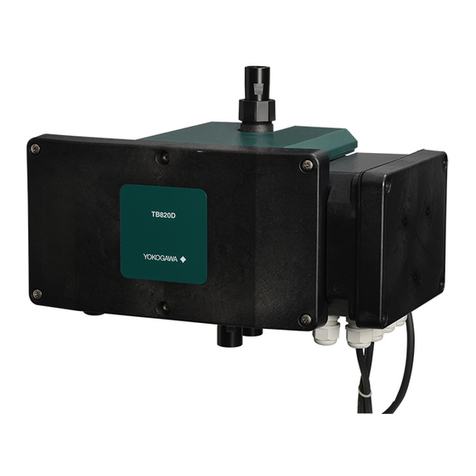
v
IM 11M03A02-00E
<CONTENTS>
Model ZO21DW
Detector
In-Situ Type Zirconia Oxygen Analyzer
CONTENTS
IM 11M03A02-00E 3rd Edition
INTRODUCTION .......................................................................................................i
For the safe use of this equipment.............................................................ii
After-sales Warranty ...................................................................................iv
1. SPECIFICATIONS ..................................................................................... 1-1
1.1 StandardSpecications................................................................................... 1-1
1.2 Model and Codes .............................................................................................. 1-2
1.3 External Dimensions ........................................................................................ 1-3
2. INSTALLATION ......................................................................................... 2-1
2.1 Installation Site.................................................................................................. 2-1
2.2 ProbeInsertionHole......................................................................................... 2-1
2.3 Detector Installation ......................................................................................... 2-2
3. PIPING........................................................................................................ 3-1
3.1 PipingforSystem1........................................................................................... 3-1
3.1.1 Parts Required for Piping in System 1 ...............................................3-2
3.1.2 Connection to the Calibration Gas Inlet ............................................. 3-2
3.1.3 Piping for the Reference Gas Inlet ..................................................... 3-3
3.2 PipingforSystem2........................................................................................... 3-4
3.2.1 Piping Parts for System 2 ..................................................................3-4
3.2.2 Piping for the Calibration Gas ............................................................ 3-5
3.2.3 Piping for the Reference Gas............................................................. 3-6
3.2.4 Valve Operation of Reference Gas Outlet ......................................... 3-6
3.3 PipingforSystem3.......................................................................................... 3-6
4. WIRING ...................................................................................................... 4-1
4.1 General............................................................................................................... 4-1
4.1.1 Cable Specication ............................................................................ 4-1
4.1.2 Wiring Procedure ............................................................................... 4-2
4.2 Wiring for Detector Output............................................................................... 4-3
4.2.1 Connection to the Detector ................................................................4-3
4.3 WiringforPowertoDetectorHeater............................................................... 4-4
4.3.1 Connection to Detector ......................................................................4-4
4.4 PowerandGroundingWiring.......................................................................... 4-5
4.4.1 Power Wiring ...................................................................................... 4-5
4.4.2 Grounding Wiring ............................................................................... 4-5































